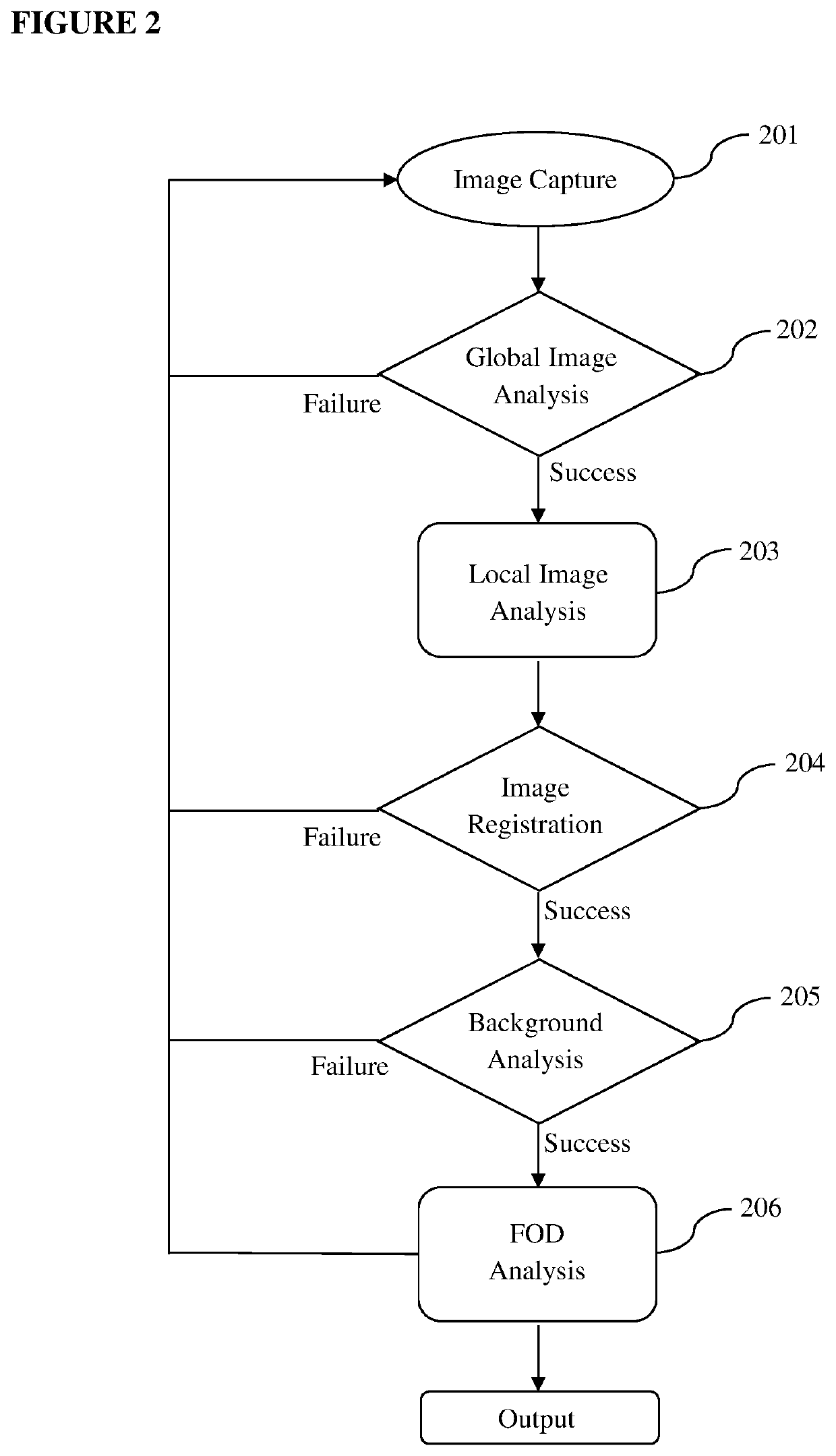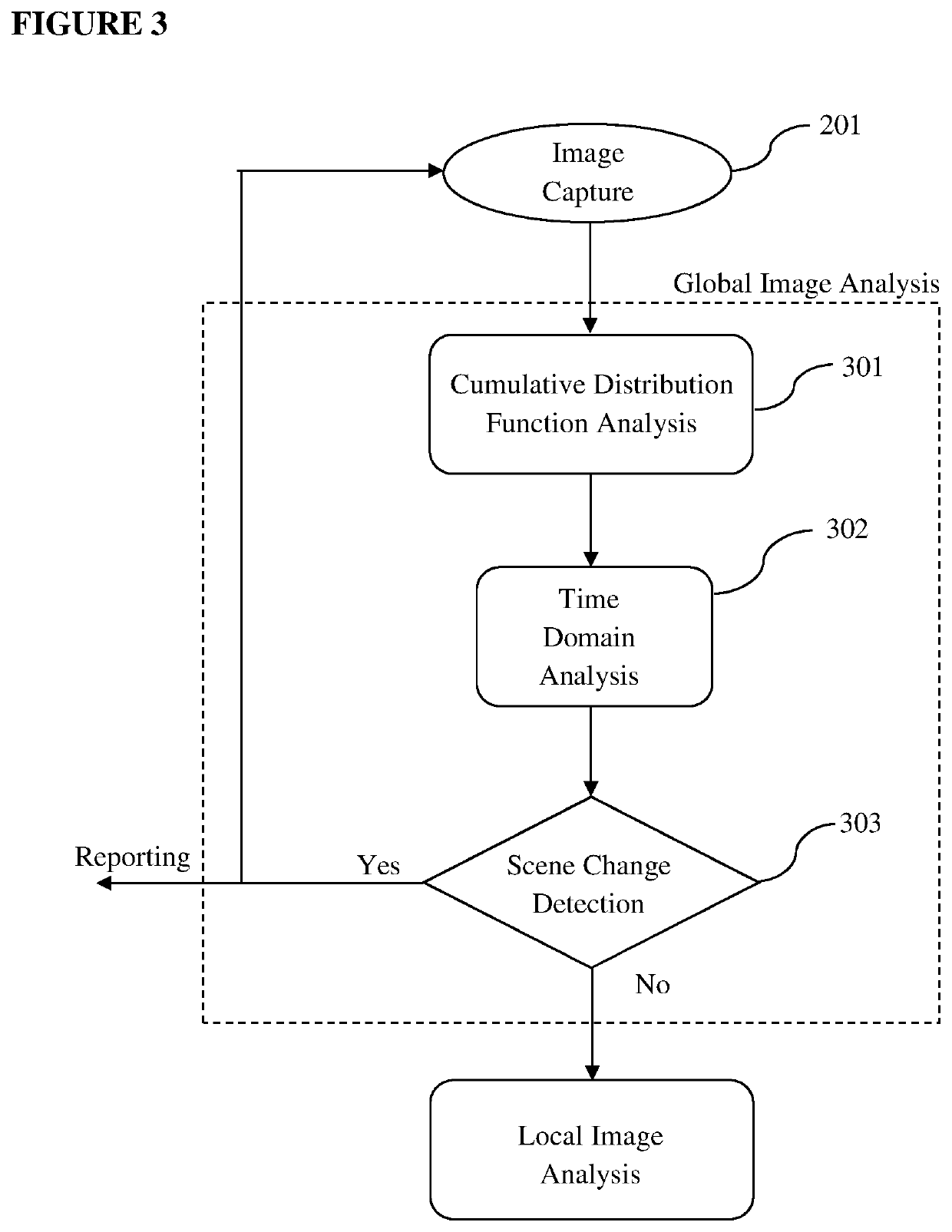A method for foreign object debris detection
a foreign object and debris detection technology, applied in the field of remote detection systems, can solve the problems of difficulty in limiting foreign object debris to a specific shape, color or material property, inability to reliably control the manual process, etc., and achieve the effect of more robust and accurate filters
- Summary
- Abstract
- Description
- Claims
- Application Information
AI Technical Summary
Benefits of technology
Problems solved by technology
Method used
Image
Examples
Embodiment Construction
[0019]Accompanying figures are given solely for the purpose of exemplifying a FOD detection system, whose advantages over prior art were outlined above and will be explained in brief hereinafter.
[0020]The figures are not meant to delimit the scope of protection as identified in the claims nor should they be referred to alone in an effort to interpret the scope identified in said claims without recourse to the technical disclosure in the description of the present invention.
[0021]FIG. 1 illustrates the general pipeline of the operation from start until the end of decision module according to the present invention.
[0022]FIG. 2 illustrates the general architecture of the image analysis pipeline from image capture until the end of FOD analysis module according to the present invention.
[0023]FIG. 3 demonstrates the details of Global Image Analysis module according to the present invention.
[0024]FIG. 4 demonstrates the details of Local Image Analysis module according to the present invent...
PUM
 Login to View More
Login to View More Abstract
Description
Claims
Application Information
 Login to View More
Login to View More - R&D
- Intellectual Property
- Life Sciences
- Materials
- Tech Scout
- Unparalleled Data Quality
- Higher Quality Content
- 60% Fewer Hallucinations
Browse by: Latest US Patents, China's latest patents, Technical Efficacy Thesaurus, Application Domain, Technology Topic, Popular Technical Reports.
© 2025 PatSnap. All rights reserved.Legal|Privacy policy|Modern Slavery Act Transparency Statement|Sitemap|About US| Contact US: help@patsnap.com



